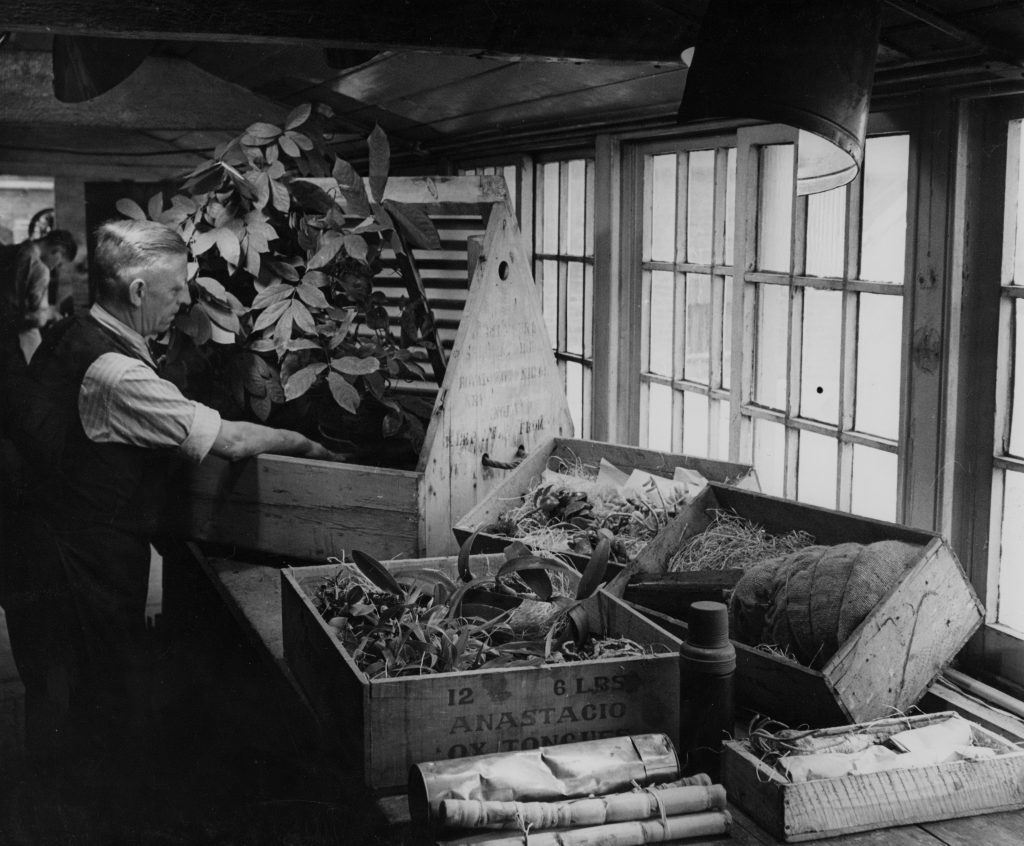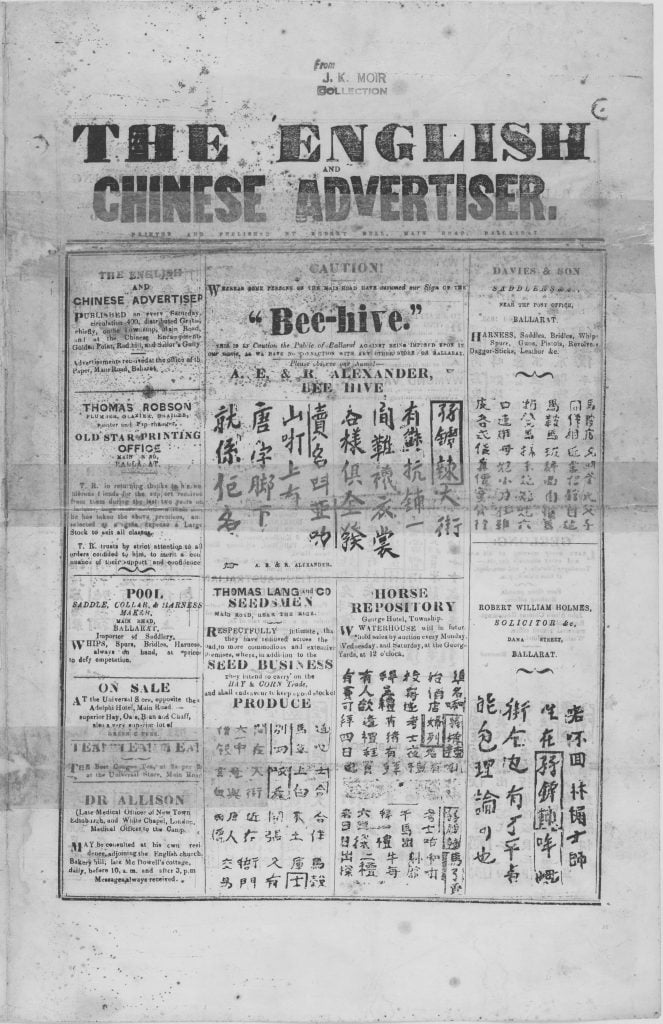Previous Redmond Barry fellow Luke Keogh’s book The Wardian case: how a simple box moved plants and changed the world details a fascinating tale in natural history.
The Wardian case tells the story of how a 19th-century naturalist accidentally discovered a way to transport plants long distances, and how this discovery laid the foundation for the global trade in plants that has underpinned global agriculture, floristry and botany in the 200 years since.
During his 2017 fellowship at the Library, Luke performed the foundational research for the book which was recently shortlisted for the NSW Premier’s General History award.
Explore the 2022 State Library Victoria Fellowships Program.
Tell us about your book – where did your fascination in the Wardian case come from?
The Wardian case is this really interesting invention that was discovered in 1829 by the doctor Nathaniel Bagshaw Ward in his dirty and sooty London apartment. He lived very close to St Katharine Docks, which was a very polluted part of London, and he discovered that if you plant plants inside an enclosed case they can survive for long periods of time without watering. He started to test it all throughout his house and then he decided to test it on long term plant transportation. And that’s where the invention started to have a global impact.
For me, the interest in Ward’s case came about when I was working in Munich, Germany on an exhibition. It was called ‘Welcome to the Anthropocene’. The Anthropocene is this global concept that suggests that the human impact on the world has been so great that it will be left in the geological record.
I was curating a section on mobility and I was trying to take people back to where the roots of these mobility patterns happened and I discovered the case in my research, and then I went and found one at the Berlin Botanic Gardens. Soon I realised that there were very few of these actual cases in existence worldwide, and that sort of sparked my curiosity as a curator.
As an environmental historian, I thought here’s this box that transformed the world, but is almost lost to us. I put it on show in Munich and then realised there were no books written about it, and it’s kept my interest ever since. I think that was five or six years ago.

Which collection/s at the Library did you draw on for your research?
For a long time, Victoria was really imagined as the Garden State. So a place with lots of beautiful gardens, and one thing that was important for me in this book was that yes, Nathaniel Ward was in England, but I wanted to bring in other examples from around the world. So I did some research in Germany, Belgium and the Netherlands as well as the USA.
At the State Library I was really looking at a lot of the Australian nursery networks, so the commercial nursery trade and how plants were moving in that sense. The Library has these really good resources on a chap called Thomas Lang who was a nurseryman in Ballarat just at the close of the Goldfields era. Clearly with higher wealth people are buying more plants, and so a nursery such as Lang’s was really important for that.
There’s one really great description which comes from one of the newspapers, where he proclaims that he’s moved more than a million plants to the colonies in less than 10 years. That’s a lot of plants coming in, and that’s just exotic plants coming to one person named Thomas with one nursery. So if we imagine all the other nurseries there, it’s quite a lot.
Is there a particularly memorable discovery you made when researching?
One of my favourite things that I found at the Library is an advertisement from Thomas Lang’s nursery that’s in Chinese. The Library has amazing collections of horticulture, gardening and history, and so the other amazing thing was just how beautifully some of these catalogues are illustrated.

As a historian and someone who loves archives and these sorts of things, it’s an extraordinary collection. The collection that the Library looks after that is accessible to Victorians is so great, it was a very fun time for me.
Who at the Library did you work with to access what you needed?
The people at the Library were great. Probably the really important team I worked with was the manuscripts and archives teams, as Thomas Lang has a set of archives at the Library. I also worked with the pictures team because I was hoping to find some pictures to help illustrate the book.
The Redmond Barry Fellowship is a collaboration with University of Melbourne and so the people at University of Melbourne were also really good. In the archives in particular; they have a great collection of imagery from the Burnley gardens.
The really special parts of that collection are also the collection of images around female gardeners. So often, these people are not represented in a lot of literature pre 1950, so that’s an extraordinary collection as well.
Diversity like this is not only the role of the of the Library, but also the role of historians and curators and people working in the field. So one of the important parts of the book is that, yes, this is a story of an invention by a white male in London in the 19th century, but one of the impacts of the Wardian case is that as it spread throughout the world, it impacted on a lot of disadvantaged people, whether they’re indentured labourers, whether they were Indigenous peoples working in these places, whether it was the breakdown of Indigenous economies, or whether it was our females and children.
So bringing in those voices in particular through the imagery was an important part of some of the later chapters in the books, and seeing those consequences and how this played out in a global scale.
What was your process, in terms of how you used the Library materials in writing your book?
One really important part of the book is that the Wardian case is this very fragmented story, so there’s not one set of archives that I went to. It was more about following this box around all these different places around the world, and so the really fortunate part was that I got to go to London, Munich, Berlin, USA, Washington, all these places.
And then when I came back to work at the State Library it was about compiling a lot of my research and spending some time writing, but then also contextualising those international archives within the context of an Australian perspective. So that was one of the important parts of being at the Library – having the time to collate this work but also to use the significant resources, including secondary resources, that the Library has to help in the research.
Is there a highlight you can remember from your fellowship in 2017?
Getting to walk into the La Trobe Reading Room every day, and then having an office off the La Trobe Reading Room and getting to walk through that extraordinary Dome. That is something I will never forget.
It was just extraordinary, and that space was just wonderful and inspiring. Libraries are such an important place for people to just learn and spend their time, and have remained important even with the emergence of technology.
What projects are you working on now?
I am currently the Senior Curator at the National Wool Museum in Geelong and we have two really great exhibitions on at the moment which I’ve been working on since publishing the book.
One is called On the land: our story retold, which is a new retelling of the Australian wool story with significant engagement with our Wadawurrung traditional owners to create that space. The other one is a new exhibition called Necessity: Waggas and the art of making do and it’s about the Australian Wagga quilt which we hold one of Australia’s largest collections on.
Luke Keogh’s book The Wardian case: how a simple box moved plants and changed the world is available at The University of Chicago Press.



Look forward to reading your work Luke. I was interested in applying for a Regional fellowship with the SLV for next year but have find trying to research references and collections during this latest lockdown has hampered my thought processes and how I explain my application. I am a Western Herbal Medicine practitioner so am very interested in how plants moved around the world and were used by people in new locations. Traditional vs modern. What has really changed?